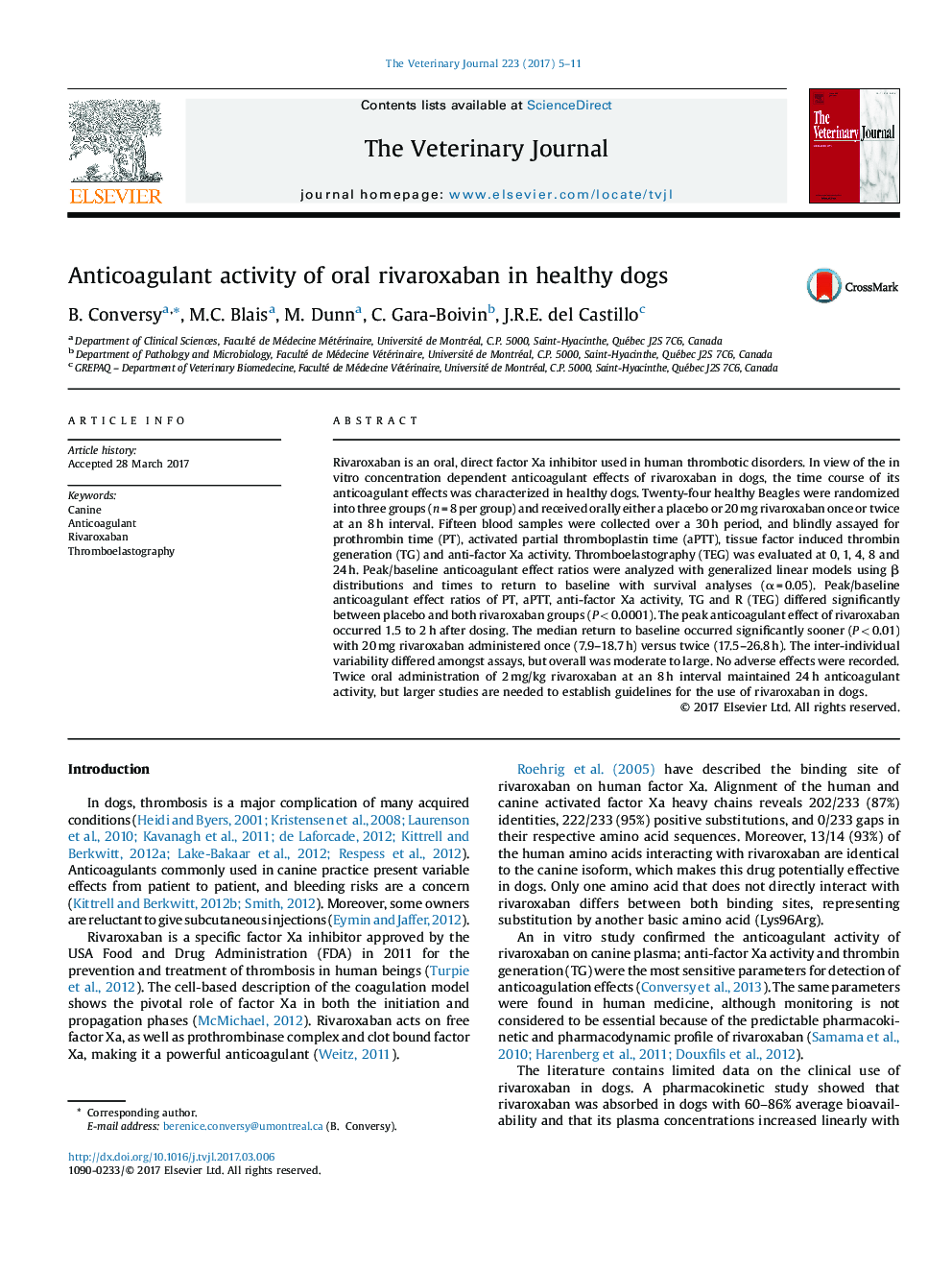| Article ID | Journal | Published Year | Pages | File Type |
|---|---|---|---|---|
| 5544988 | The Veterinary Journal | 2017 | 7 Pages |
â¢Rivaroxaban is an oral anticoagulant with a predictable pharmacokinetic/pharmacodynamic profile in human beings.â¢The anticoagulant effect of rivaroxaban in healthy dogs was studied prospectively.â¢Oral rivaroxaban (2âmg/kg given at an 8âh interval) exerted a measurable 24âh anticoagulant effect in dogs.â¢Anti-factor Xa activity and thrombin generation could be used to monitor the anticoagulant effect of rivaroxaban.
Rivaroxaban is an oral, direct factor Xa inhibitor used in human thrombotic disorders. In view of the in vitro concentration dependent anticoagulant effects of rivaroxaban in dogs, the time course of its anticoagulant effects was characterized in healthy dogs. Twenty-four healthy Beagles were randomized into three groups (nâ=â8 per group) and received orally either a placebo or 20âmg rivaroxaban once or twice at an 8âh interval. Fifteen blood samples were collected over a 30âh period, and blindly assayed for prothrombin time (PT), activated partial thromboplastin time (aPTT), tissue factor induced thrombin generation (TG) and anti-factor Xa activity. Thromboelastography (TEG) was evaluated at 0, 1, 4, 8 and 24âh. Peak/baseline anticoagulant effect ratios were analyzed with generalized linear models using β distributions and times to return to baseline with survival analyses (αâ=â0.05). Peak/baseline anticoagulant effect ratios of PT, aPTT, anti-factor Xa activity, TG and R (TEG) differed significantly between placebo and both rivaroxaban groups (Pâ<0.0001). The peak anticoagulant effect of rivaroxaban occurred 1.5 to 2âh after dosing. The median return to baseline occurred significantly sooner (Pâ<0.01) with 20âmg rivaroxaban administered once (7.9-18.7âh) versus twice (17.5-26.8âh). The inter-individual variability differed amongst assays, but overall was moderate to large. No adverse effects were recorded. Twice oral administration of 2âmg/kg rivaroxaban at an 8âh interval maintained 24âh anticoagulant activity, but larger studies are needed to establish guidelines for the use of rivaroxaban in dogs.
